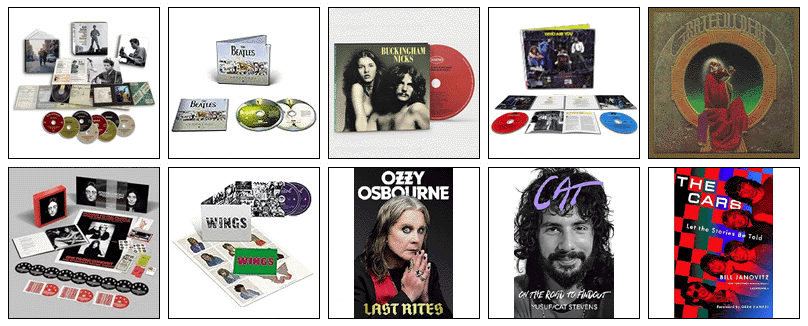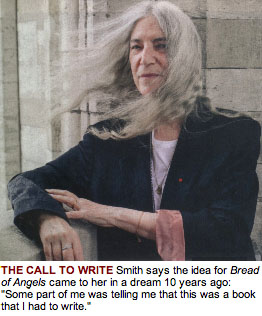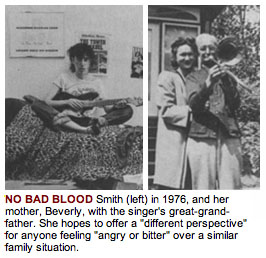![]()
| '70s Holiday Gift Ideas |
|
![]()

These recently released CD's and books are sure to please any
Seventies music fan on your shopping list this holiday season.
BOB DYLAN - The Bootleg Series Vol. 18: Through The Open Window, 1956-1963 (Legacy Recordings, $149.99) This next volume in the award-winning Bootleg Series tells the story of Dylan's emergence and maturation as a songwriter and performer, from Minnesota to the Greenwich Village bohemia in the early 1960s. It includes rare Columbia Records outtakes, recordings made at club dates, in tiny informal gatherings, in friends' apartments, and at jam sessions in long-gone musicians' hangouts. The 8CD Deluxe set features 139 tracks -- 48 never-before released performances, as well as 38 super-rare cuts plus a hardcover book with extensive liner notes by Sean Wilentz and over 100 rare photographs. The last two discs of the set consist of the unreleased complete recording of Dylan's 1963 landmark show at Carnegie Hall, mixed from original tapes.
 THE BEATLES - Anthology 4 (Capitol, $26.99) Anthology 4, the new volume from The Beatles Anthology Collection, is newly curated by Giles Martin, and includes 13 previously-unreleased session outtakes dating from 1963 to 1969. It also includes the band's final single, "Now And Then," released in 2023, and new mixes of The Beatles' Anthology-associated hit singles: the GRAMMY-winning "Free As A Bird" and "Real Love," given new life by their original producer, Jeff Lynne, using de-mixed John Lennon vocals. The track notes are written by Kevin Howlett with an introduction compiled from 1996 interviews recorded with The Beatles' close friend and adviser Derek Taylor. Furthermore, Anthology 4 presents 17 tracks that were previously unavailable on CD.
THE BEATLES - Anthology 4 (Capitol, $26.99) Anthology 4, the new volume from The Beatles Anthology Collection, is newly curated by Giles Martin, and includes 13 previously-unreleased session outtakes dating from 1963 to 1969. It also includes the band's final single, "Now And Then," released in 2023, and new mixes of The Beatles' Anthology-associated hit singles: the GRAMMY-winning "Free As A Bird" and "Real Love," given new life by their original producer, Jeff Lynne, using de-mixed John Lennon vocals. The track notes are written by Kevin Howlett with an introduction compiled from 1996 interviews recorded with The Beatles' close friend and adviser Derek Taylor. Furthermore, Anthology 4 presents 17 tracks that were previously unavailable on CD.
BUCKINGHAM NICKS (Rhino Records, $16.92) The legendary debut studio album from Stevie Nicks & Lindsey Buckingham. Buckingham Nicks is the only studio album by Lindsey Buckingham and Stevie Nicks as a duo, prior to them joining Fleetwood Mac. Originally released in 1973 and unavailable for decades, the album has been sourced from the original analog master tapes and will be available for the first time on CD. Released on September 5, 1973, Buckingham Nicks quickly faded from commercial view but never disappeared from the cultural conversation. Recorded at Sound City Studios in Los Angeles and produced by Keith Olsen, the album introduced Nicks and Buckingham's tightly wound harmonies and sharply contrasting songwriting voices across 10 tracks -- ranging from the folk-rock shimmer of "Crystal" to the sunbaked strut of "Don't Let Me Down Again."
THE WHO - Who Are You Deluxe (Geffen, $19.98) The Deluxe 2CD set of The Who's 1978 LP Who Are You pairs the original album newly remastered plus a CD of tracks taken from the studio sessions, demo recordings and live material. CD2 Sessions & Demos includes previously unreleased versions of "Who Are You," "New Song," "Trick Of The Light," "Guitar Pen," "905," "Good Time Coming," "Sister Disco," "Music Must Change," and "Who Are You." The two discs are presented in an 8-panel digi-pack with a 28-page booklet.
 THE GRATEFUL DEAD - Blues For Allah 50th Anniversary (Grateful Dead Productions, $34.77) The 3-disc special release of the Grateful Dead's ambitious 1975 album Blues For Allah features the original album on Disc 1, remastered by David Glasser at Airshow Mastering, with tape restoration and speed correction by Plangent Processes. On Disc 2, there are nearly 45 minutes of nearly-live material from August 12, 1975 at the Great American Music Hall in San Francisco, the soundcheck the day before the Dead's famous show at the venue on August 13, 1975, all mixed from the 16-track analog masters. Additionally, there is the full Blues For Allah suite from the March 23, 1975 SNACK Benefit at Kezar Stadium, where the Dead played their first of four 1975 shows by debuting one of their most wild pieces of music they'd ever composed. Disc 3 features 75 minutes of live material recorded in June 1976 at the Tower Theatre in Upper Darby, PA, on the Dead's first tour after the release of Blues For Allah, and features all five of the Blues For Allah songs the Dead were performing live at the time: "The Music Never Stopped," "Help On The Way," Slipknot!," "Franklin's Tower," and "Crazy Fingers," along with a half hour of additional material from the shows. This 50th anniversary reissue is packed with three hours of studio, soundcheck, and live material.
THE GRATEFUL DEAD - Blues For Allah 50th Anniversary (Grateful Dead Productions, $34.77) The 3-disc special release of the Grateful Dead's ambitious 1975 album Blues For Allah features the original album on Disc 1, remastered by David Glasser at Airshow Mastering, with tape restoration and speed correction by Plangent Processes. On Disc 2, there are nearly 45 minutes of nearly-live material from August 12, 1975 at the Great American Music Hall in San Francisco, the soundcheck the day before the Dead's famous show at the venue on August 13, 1975, all mixed from the 16-track analog masters. Additionally, there is the full Blues For Allah suite from the March 23, 1975 SNACK Benefit at Kezar Stadium, where the Dead played their first of four 1975 shows by debuting one of their most wild pieces of music they'd ever composed. Disc 3 features 75 minutes of live material recorded in June 1976 at the Tower Theatre in Upper Darby, PA, on the Dead's first tour after the release of Blues For Allah, and features all five of the Blues For Allah songs the Dead were performing live at the time: "The Music Never Stopped," "Help On The Way," Slipknot!," "Franklin's Tower," and "Crazy Fingers," along with a half hour of additional material from the shows. This 50th anniversary reissue is packed with three hours of studio, soundcheck, and live material.
JOHN LENNON - Power To The People: Live at the One To One Concert Super Deluxe 9CD/3BR (Capitol, $224.98) On August 30, 1972, John Lennon & Yoko Ono/Plastic Ono Band with Elephant's Memory and guests headlined 2 historic ONE TO ONE concerts at Madison Square Garden, NYC. These benefit shows played to a combined audience of 40K people and helped raise over $1.5 million to support children with disabilities. They were his only full-length concerts after leaving the Beatles and the last shows John & Yoko performed together. Produced by Sean Ono Lennon, both concerts have been completely remixed and re-engineered by Paul Hicks and Sam Gannon, using new HD multitrack transfers by Rob Stevens with mixes mastered by Alex Wharton at Abbey Road. Also includes a 204-page book, newsprint poster, 2 postcards, 2 sticker sheets, 2 replica tickets, VIP backstage pass & VIP after-show invitation. The concerts are presented separately as "afternoon," "evening" and "hybrid" shows on 3 HD Audio Blu-ray discs in HD Stereo, 5.1 Surround & Dolby Atmos.
 PAUL McCARTNEY AND WINGS - Wings Deluxe (Capitol, $24.98) Wings Deluxe is the ultimate anthology of the band that defined the sound of the 1970s. A lovingly curated time capsule of imagery and music personally overseen by Paul McCartney and designed by Paul and Aubrey "Po" Powell of the legendary Hipgnosis design studio, Wings Deluxe includes 32 timeless international hits including "Band on the Run," "Live and Let Die," "Jet" and "Let 'Em In" -- songs that still feature in his live shows to this day. The expanded booklet also includes an introduction by Paul plus extensive album-by-album notes on the iconic artwork written by Po, with additional editorial by Pete Paphides and showcases original portraits of the band by Humphrey Ocean. In addition to the booklet, the 2CD set includes a poster.
PAUL McCARTNEY AND WINGS - Wings Deluxe (Capitol, $24.98) Wings Deluxe is the ultimate anthology of the band that defined the sound of the 1970s. A lovingly curated time capsule of imagery and music personally overseen by Paul McCartney and designed by Paul and Aubrey "Po" Powell of the legendary Hipgnosis design studio, Wings Deluxe includes 32 timeless international hits including "Band on the Run," "Live and Let Die," "Jet" and "Let 'Em In" -- songs that still feature in his live shows to this day. The expanded booklet also includes an introduction by Paul plus extensive album-by-album notes on the iconic artwork written by Po, with additional editorial by Pete Paphides and showcases original portraits of the band by Humphrey Ocean. In addition to the booklet, the 2CD set includes a poster.
OZZY OSBOURNE - Last Rites (Grand Central Publishing, $17.98) An instant New York Times bestseller, Last Rites is a self-effacing and unexpectedly affecting portrait of the Prince of Darkness in twilight, mixing ancient stories of Ozzy's rock star rapscallionism (entertaining, always) with meditations on the inevitability of death that grow thicker as the book lurches toward the only conclusion it can. It's �t�h�e� �s�h�o�c�k�i�n�g�,� �b�i�t�t�e�r�l�y� �h�i�l�a�r�i�o�u�s�,� �n�e�v�e�r�-�b�e�f�o�r�e�-�t�o�l�d� �s�t�o�r�y� �o�f� �O�z�z�y�'�s� �d�e�s�c�e�n�t� �i�n�t�o� �h�e�l�l�.� �A�l�o�n�g� �t�h�e� �w�a�y�,� �h�e� �r�e�f�l�e�c�t�s� �o�n� �h�i�s� �e�x�t�r�a�o�r�d�i�n�a�r�y� �l�i�f�e� �a�n�d� �c�a�r�e�e�r�,� �i�n�c�l�u�d�i�n�g� �h�i�s� �m�a�r�r�i�a�g�e� �t�o� �w�i�f�e� �S�h�a�r�o�n�,� �a�s� �w�e�l�l� �a�s� �h�i�s� �r�e�f�l�e�c�t�i�o�n�s� �o�n� �w�h�a�t� �i�t� �t�o�o�k� �f�o�r� �h�i�m� �t�o� �g�e�t� �b�a�c�k� �o�n�s�t�a�g�e� �f�o�r� �t�h�e� �t�r�i�u�m�p�h�a�n�t� �B�a�c�k� �t�o� �t�h�e� �B�e�g�i�n�n�i�n�g� �c�o�n�c�e�r�t�,� �s�t�r�e�a�m�e�d� �a�r�o�u�n�d� �t�h�e� �w�o�r�l�d�,� �w�h�e�r�e� �O�z�z�y� �r�e�u�n�i�t�e�d� �w�i�t�h� �h�i�s� �B�l�a�c�k� �S�a�b�b�a�t�h� �b�a�n�d�m�a�t�e�s� �f�o�r� �t�h�e� �f�i�n�a�l� �t�i�m�e�. �Last Rites is the redemption narrative that The Osbournes couldn't be -- genuinely big-hearted rather than contrivedly quirky, refusing to overwrite past ugliness but still brimming with gratitude... a fitting final encore for a life lived at extremes.
 YUSUF/CAT STEVENS - On The Road To Findout (Genesis Publications, $28.67) Cat Stevens was launched to fame in the swinging sixties, with chart-topping hits like "Matthew and Son" and "The First Cut is the Deepest." After exploring Buddhism, Zen, Hinduism, and astrology, in 1975 he once again came face-to-face in a dangerous encounter with fate; a near drowning experience in the ocean led to a transformative commitment to the Omniscient Power which miraculously saved him. This was fulfilled when his brother gifted him a copy of the Qur'an. By 1977, he embraced Islam, changed his name to Yusuf Islam, and shocked the world by leaving the music industry, dedicating his life to God, family, and humanitarian work. Cat On The Road To Findout unveils the untold chapters of his remarkable journey, illustrated with dozens of drawings in Yusuf's own hand, self-penned with raw honesty and poetic insight, he reflects on the challenges, controversies, and triumphs that have defined his life, offering readers a rare glimpse into the soul of a man that has lived multiple lives in one -- finally shedding light on all those hidden "in-betweens."
YUSUF/CAT STEVENS - On The Road To Findout (Genesis Publications, $28.67) Cat Stevens was launched to fame in the swinging sixties, with chart-topping hits like "Matthew and Son" and "The First Cut is the Deepest." After exploring Buddhism, Zen, Hinduism, and astrology, in 1975 he once again came face-to-face in a dangerous encounter with fate; a near drowning experience in the ocean led to a transformative commitment to the Omniscient Power which miraculously saved him. This was fulfilled when his brother gifted him a copy of the Qur'an. By 1977, he embraced Islam, changed his name to Yusuf Islam, and shocked the world by leaving the music industry, dedicating his life to God, family, and humanitarian work. Cat On The Road To Findout unveils the untold chapters of his remarkable journey, illustrated with dozens of drawings in Yusuf's own hand, self-penned with raw honesty and poetic insight, he reflects on the challenges, controversies, and triumphs that have defined his life, offering readers a rare glimpse into the soul of a man that has lived multiple lives in one -- finally shedding light on all those hidden "in-betweens."
THE CARS - Let the Stories Be Told (Da Capo, $26.16) This inside account of the life of a rock band bristles with extravagant details and penetrating insights, much like his masterpiece biography of Leon Russell, but Bill Janovitz's The Cars: Let the Stories Be Told persuasively makes the case for the Cars as one of the essential American rock bands of their day. Janovitz brings a fellow musician's perspective, a scholar's depth and a fan s enthusiasm to this riveting, rollercoaster ride of the entire bell curve of the storied band's epic career. "The definitive story of The Cars." - Rolling Stone ![]()

| Patti Smith's Long-Buried Family Secret |
|
![]()
The music legend writes about discovering the man who wasn't
her biological father -- and how she found the man who was.
By Colleen Kratofil in People


![]() atti Smith didn't plan to share a personal bombshell in her latest book. The godmother of punk, who burst onto the music scene in the '70s with her album Horses, won the National Book Award for her bestselling 2010 memoir Just Kids. She labored over that book "for a long time" after her dear friend, the late artist Robert Mapplethorpe, asked her to document their life in 1960s New York City. A first she had a similar goal for her new book, Bread of Angels. "It was a way to give life to the people that I've loved and lost, just like I did Robert," says Smith, 78. "My parents, my siblings, my bandmates, my husband Fred ['Sonic' Smith]."
atti Smith didn't plan to share a personal bombshell in her latest book. The godmother of punk, who burst onto the music scene in the '70s with her album Horses, won the National Book Award for her bestselling 2010 memoir Just Kids. She labored over that book "for a long time" after her dear friend, the late artist Robert Mapplethorpe, asked her to document their life in 1960s New York City. A first she had a similar goal for her new book, Bread of Angels. "It was a way to give life to the people that I've loved and lost, just like I did Robert," says Smith, 78. "My parents, my siblings, my bandmates, my husband Fred ['Sonic' Smith]."
 But while writing, she got to the bottom of a family secret: Grant, the father who raised her alongside her mom, Beverly, was not her biological dad. "I wanted the book I was writing to be a very truthful, and all of a suden I had a parallel truth," she says. "I felt if I didn't write about it, then truth was compromised." Decades ago her maternal great-grandmother had shared her suspicions that Smith was fathered by her son, Beverly's uncle. But the idea was "waved away" by both of Smith's parents. In 2002 Beverly told her daughter they needed to talk about "genetics" the next time they saw each other. But a few days later Beverly fell and hit her head. She died soon after.
But while writing, she got to the bottom of a family secret: Grant, the father who raised her alongside her mom, Beverly, was not her biological dad. "I wanted the book I was writing to be a very truthful, and all of a suden I had a parallel truth," she says. "I felt if I didn't write about it, then truth was compromised." Decades ago her maternal great-grandmother had shared her suspicions that Smith was fathered by her son, Beverly's uncle. But the idea was "waved away" by both of Smith's parents. In 2002 Beverly told her daughter they needed to talk about "genetics" the next time they saw each other. But a few days later Beverly fell and hit her head. She died soon after.
In 2012 Smith -- the oldest of four siblings raised in Chicago and South Jersey -- and her sister Linda took a DNA test that showed they were, in fact, half sisters. A few years later another DNA test determined Smith's birth father was "100 percent Ashkenazi," unlike Beverly and Grant.
Recently Smith tracked down the name of her father thanks to the "sleuthing and detective work" of her "very private" oldest daughter, whom she has welcomed back into her life after placing her for adaption when Smith was 20. "It's kind of a miracle, really," says Smith, who's also mom to sons Jackson, 43, and Jesse, 38. Her father was a former soldier named Sidney who eventually married another woman following his liaison with Beverly and died in 1965 at age 53. The singer admits she was "sad" to learn that Grant, who died in 1999, wasn't her biological dad, but "in the end, it doesn't matter. My love for my father eclipses blood," she says, adding, "One shaped my mind, and one gave me life. I was very fortunate." ![]()
![]()
| The Best of EXTRA! |
|
![]()
